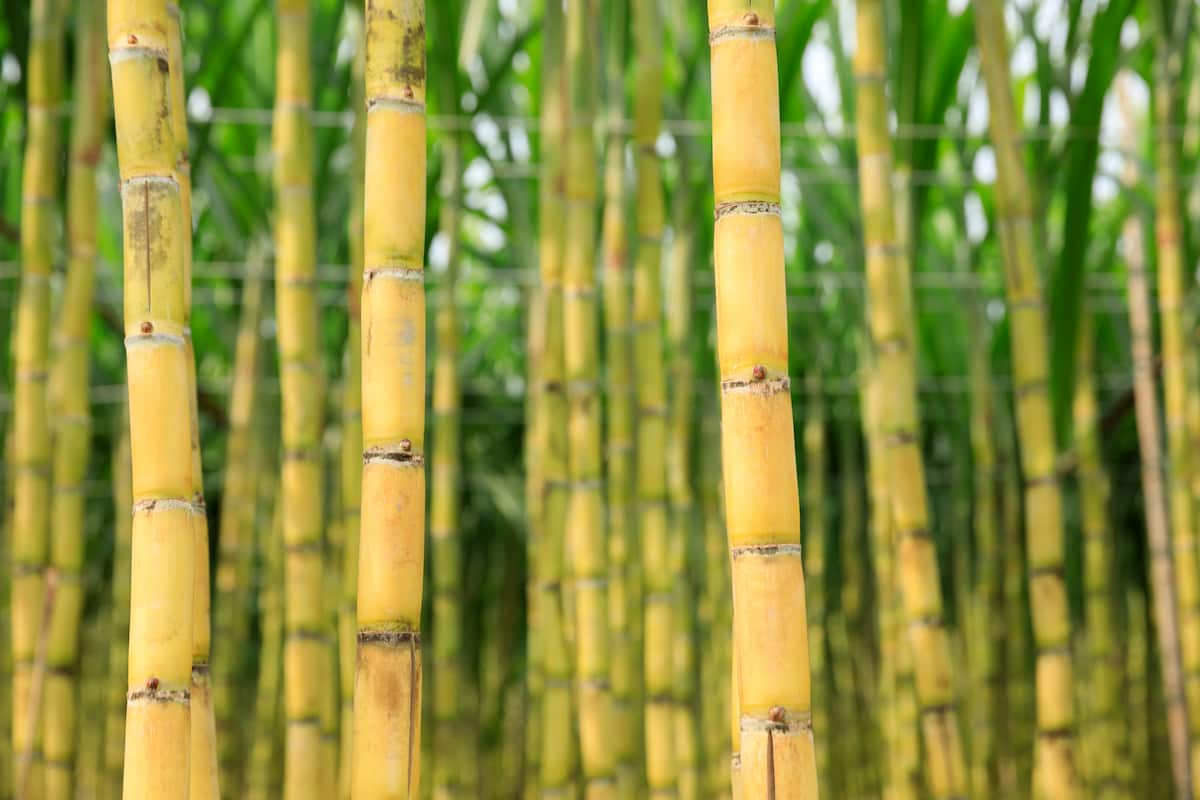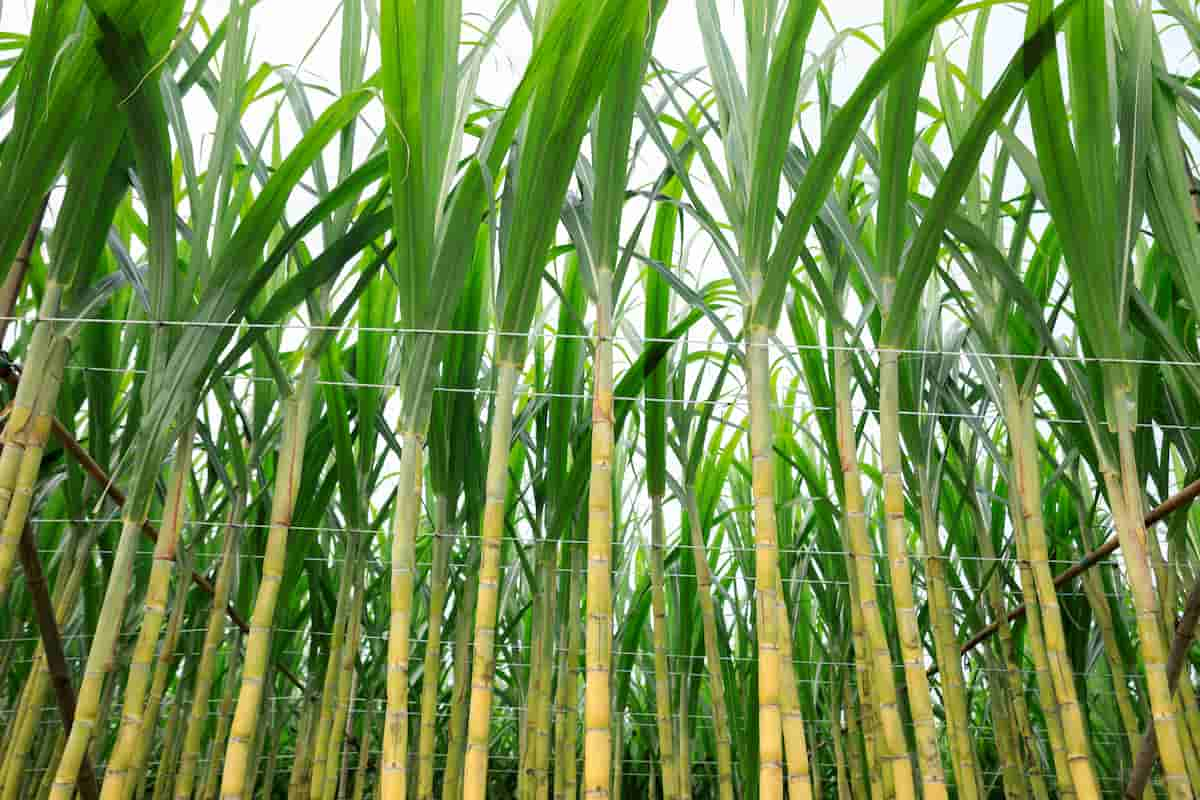Sugarcane woolly aphid is a significant pest affecting sugarcane cultivation in many Asian regions, including India, Nepal, Bangladesh, and the Solomon Islands. It has been reported in both tropical and subtropical zones in India, with severe outbreaks occurring in Maharashtra, Karnataka, Andhra Pradesh, Tamil Nadu, and Gujarat.
This pest depends on the sugarcane plant’s foliage, sucking out the sap and causing significant damage. Aphids exude a white, waxy substance that coats the underside of the leaves, making infestations easy to detect. In addition, the honeydew excreted by these insects can promote the development of sooty mold, further damaging the crops.

Effectively managing woolly aphids in sugarcane cultivation is essential to prevent economic losses. Farmers can use cultural practices and biological and chemical control to manage this insect. This blog post intends to provide valuable insight into these management strategies to assist sugarcane farmers in preventing woolly aphid infestations and maintaining healthy crops.
Wooly Aphid Management in Sugarcane
Life Cycle of Wooly Aphid
- The woolly aphid’s life cycle in sugarcane consists of four nymphal instars and one adult stage. After the fourth instar, the adult emerges and reproduces viviparously.
- Each female can generate between 15 and 35 young within 24 hours of mating and a maximum of 217 nymphs within 20 days.
- The female population typically dominates, resulting in accelerated reproduction. Nymphs require between 6 and 22 days to complete four instars and mature into adults.
- Adult females typically conclude their life cycle within a month, with an average lifespan of 32 to 57 days.
- Eggs laid by sexual females in autumn give rise to parthenogenetic apterous viviparous females in spring. Typically, the species does not migrate, spending its entire life cycle on a single plant.
Host Range: The woolly aphid is known to have a wide range of hosts. This means that it can infest more than just sugarcane. The pest feeds the sap of different trees, bushes, and plants. Woolly aphids often live on apple, pear, peach, plum, apricot, cherry, citrus, grapevine, olive, mulberry, eucalyptus, poplar, willow, and many other ornamental and fruit-bearing plants.
Identification of Wooly Aphid in Sugarcane in the Field
- Woolly aphids are small insects that feed on the sap of plants and can do a lot of damage to crops like sugarcane. They are called woolly aphids because they produce a white substance that looks like wool and covers their bodies. This substance protects them from predators and bad weather.
- Woolly aphids can be identified in sugarcane fields. They are small and have round bodies. They also have a white, wool-like substance on their bodies. Woolly aphids can damage crops, so it’s important to find and get rid of them early.
Damage Symptoms of Wooly Aphid in Sugarcane
- White, soft insects that feed on stems, tillers, and even roots.
- Deformed leaves, yellowing foliage, weak growth, and branch mortality
- honeydew and a white, fluffy coating near feeding locations
- Cankers and swellings develop on canes.
- Formation of swellings or massive knots on root systems
- Impaired water and nutrient transmission results in a yellowing of tree foliage.
- Infested young plants readily uproot.
- Leaves become dry and brittle.
- Heavy honeydew production resulted in the development of sooty mold.
- Visible deposition of woolly matter on the earth or soil.
In case you missed it: Internode Borer Management in Sugarcane: Symptoms, Treatment, Chemical, Biological, Natural, and Organic Control

Factors Favoring Growth/ Causes of Wooly Aphid Spread in the Field
- Woolly aphids overwinter on sugarcane and feed on younger shoots and limbs in spring.
- Pests thrive in high humidity, intermittent rains, and moderate temps. Pests dislike hot, dry summers. Aphid development occurs at 20–23 C, while temps below 15 C or above 28 C inactivate them.
- Aphids thrive in dense crop covers, high nitrogen levels, and irrigation water.
- Winged females can migrate to other host plants, and sugarcane areas attract woolly aphids.
- Woolly aphid-fed wounds can draw opportunistic pathogens that colonize and damage the plant.
Impact of Wooly Aphid on Sugarcane Yield
Due to continuous sap sucking and the development of sooty mold, the wooly aphid infestation on sugarcane can significantly impact yield. It can contribute to small canes and a decrease in photosynthesis, resulting in a 53% decrease in sucrose content. These variables can ultimately decrease crop yield and economic losses for sugarcane farmers.
Cultural Management of Wooly Aphid in Sugarcane
- Planting in paired rows helps prevent the spread of the woolly aphids.
- Nitrogenous fertilizers should not be used excessively because they promote aphid development.
- The use of organic fertilizers can increase soil fertility and promote plant growth.
- The removal of pests from the sugarcane plant is helped by rapping the canes along the borders.
- Infested tops and canes should not be transported or used as sowing seed, as doing so could spread the pest to other areas.
Biological Management of Wooly Aphid in Sugarcane
- The biological management of wooly aphids in sugarcane uses natural predators and pathogens to control the insect population. Encourage wooly aphid predators such as Diapha aphidivora Meyrick, Ishchiodon scutellaris, Episyrphus baleatus, Chrysopa spp., Schymnus sp., Cheilomeness sexmaculata, Coccinella septempunctata, Synnonycha grandis, Brumus spp.
- Dideopsis Infecting and killing vermin with pathogens such as Cladosporium oxysporum, Metarhizium anisopliae, Verticillium lecanii, and Beauveria bassiana is also possible.
- In addition, using organic and biological fertilizers can contribute to the establishment of a healthy soil environment that supports natural predators and reduces insect populations.
Chemical Management of Wooly Aphid in Sugarcane
- Chemical control of woolly aphids in sugarcane can be performed proactively or after discovering the insect.
- Systemic treatments can aid in preventing aphids from grazing on treated plants, but they may also kill beneficial insects.
- Effective reactive applications include deltamethrin, lambda-cyhalothrin, and acetamiprid. However, you should avoid carbamates and pyrethroids because they can eliminate parasites and predators, leading to aphid outbreaks.
- Due to the risk of pollinating insects, avoiding spraying trees in bloom is essential. Timing and dosage of chemical remedies are crucial for control effectiveness.
Organic Management of Wooly Aphid in Sugarcane
- Woolly aphids in sugarcane can be controlled organically by penetrating their woolly coat with diluted alcohol or insecticidal soaps and spraying ecological oils or neem extracts.
- Promoting predators like lacewings, ladybugs, hoverflies, and parasitic wasps. Predator earwigs can breed in artificial refuges. Organic control requires coverage and follow-up sprays.
In case you missed it: Early Shoot Borer Management in Sugarcane: Symptoms, Treatment, Chemical, Biological, Natural, and Organic Control

Preventive Measures for Control of Wooly Aphid
- Preventive measures include choosing resistant varieties, regular monitoring and scrubbing of plants, balanced fertilization, avoiding excessive pesticide usage, summer pruning to remove colonies, removing affected shoots and suckers, and painting pruning cuts with commercial paint to discourage colonies. These measures reduce aphids and sustain sugarcane crops.
Conclusion
Woolly aphids may severely infest sugarcane, resulting in lower yield and sucrose content. Chemical, biological, natural, and organic control methods are available, as are preventive steps such as resistant variety selection and balanced fertilization.
- Deworming Schedule for Dogs/Puppies: A Beginners Guide
- How to Prevent and Control Parasites in Goats
- Beneficial Insects in Pest Management
- Natural Solutions for Pest Control in Flower Gardens
- Types of Fungicides Used in Agriculture
- Common Issues in the Fruit Development Stage of Pomegranate Farming
- Fruit Development Issues in Papaya: Easy Solutions and Treatment
- Soil-Borne Diseases and How to Protect Your Plants
- Practices to Prevent Disease Spread in the Garden